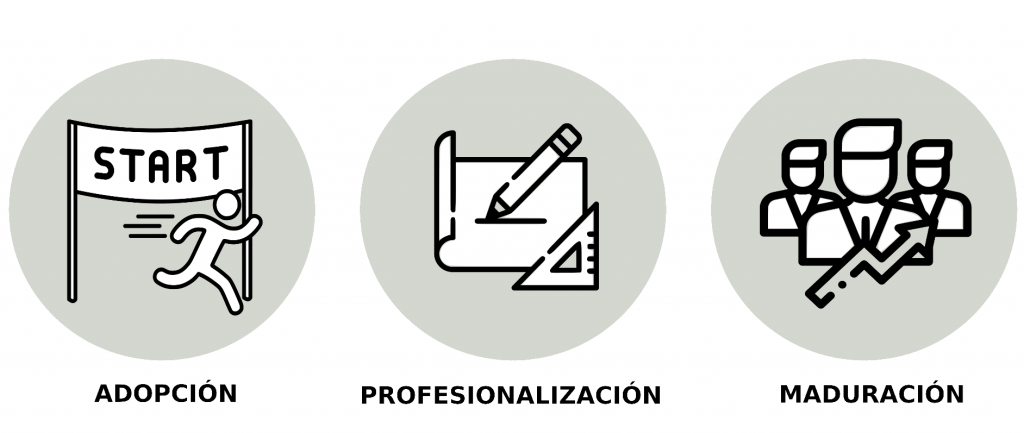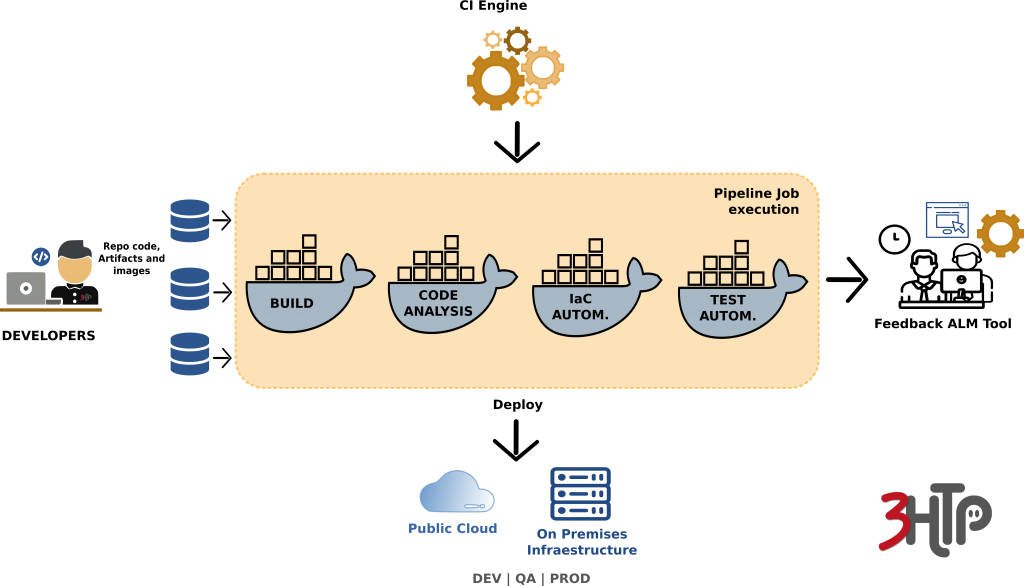INNOVATION IN TECHNOLOGY

DEVOPS AND CONTAINERS | IMPORTANT ACTORS OF AGILITY
The world of technology continues with great advancement and innovation and DevOps and Containerization technologies are an example of this. Over the years they have developed new concepts and are the focus of the technical and operational areas, which seek agility, automation in management and reduction of time, advantages that the correct adoption of DevOps processes and the use of container technology.
Due to the increase and speed of technological leaps, the software market needs to produce high-quality results in a short time, increasing agility and limiting the number of life cycle errors (ALM). In this scenario, DevOps has the challenge of being part of the solution and overcoming the traditional problems of the IT areas: definition meetings, management of procurement and infrastructure processes, coupling of areas for the governance model, among others.
On the other hand, containerization technologies bring all the characteristics to simplify the application management process, allow portability between environments (on-premises – Cloud), and centralize the tasks of the operation teams, thus giving agility and mobility to the software, without losing sight of the implications of automation and management with DevOps.
The “everything as code” has been opening an important framework for the development of skills within the software cycle, which suggests incorporating scripting strategies within DevOps in order to optimize the way the included processes are automated.
We are going to involve these concepts to expose the benefits of the successful implementation of DevOps, taking innovation technologies hand in hand.
Phases of the 3HTP methodology

Within the adoption phase (first phase of the 3HTP methodology) it is important to transform the concepts of on-premises software installations and lead to dynamic models where solutions from infrastructure as code (Iac), application containerization, platforms as a service and script enablement participate. and/or plugins for the software execution of the toolchain; This is called Hybrid DevOps and what is known is the ability to define a faster implementation strategy.
In the DevOps Software market we find many solutions that offer these possibilities, but what is really important is to know how to define the tools that “contribute to my current business reality”, that is, that the analysis of the toolchain to be implemented is given by the scope it has each tool versus the functionalities that are needed in the objective outlined as an implementation roadmap.

Hybrid DevOps allows mixing these technology concepts to accelerate the step to professionalization (Phase 2 of the 3HTP methodology) and at the same time provide as an example automation measures, decrease in infrastructure costs, use of resources, and above all agility. We also find continuous integration engines that allow the execution of Jobs, with integration to automation tasks to the software and execution tasks of availability and provisioning of complete platforms for the applications.
The diagram of the graph Nr2 shows an example of an implementation that could be given by different types of software solutions to contribute to the toolchain: The Artifact and Image Source repositories (now with the Containers trend) that are generally almost part of an asset for the company for its value and importance. On the other hand, a continuous integration engine with a pipeline that allows the execution of the DevOps phases to involve the creation of the container where the software that needs to be called to fulfill a task at a certain point in time (compilation, code analysis, unit tests, etc.), called infrastructure scripts as code, which allow the creation and provisioning of an environment, for example for the QA Testing phases, which are of “volatile” necessity and finally the call to scripts that automate a task by itself or by means of software. Finally, it also allows team collaboration and continuous improvement with feedback and feedback to the ALM solution, which could be software as a service (JIRA, VSTS, EWM, etc).
The speed of the Development teams and the technology area must be given by the implementation of solutions that contribute and give that speed that the market exists and that agility that is talked about so much. The adoption of technological tools today can be seen from different points of view and the use of resources is a vital part of the goals that IT has.
It is time to refocus the processes and adoption model, and launch into the management of a Hybrid DevOps architecture to meet the needs of the organization; It is time to increase the scripting skills of the teams involved in DevOps (Development, Testing, infrastructure, production) and start laboratories of these new solutions that help in the way of reducing time and costs.
In the next few years, DevOps faces optimizing and improving partitions that have been created in the middle phases of the CI / CT / CD / RM lifecycle process, and getting started delivering a tunnel (pipeline) that truly connects end to end. end-to-end Development with uninterrupted Operations and with the standards of Automation, quality, agility, security that the software and applications require.